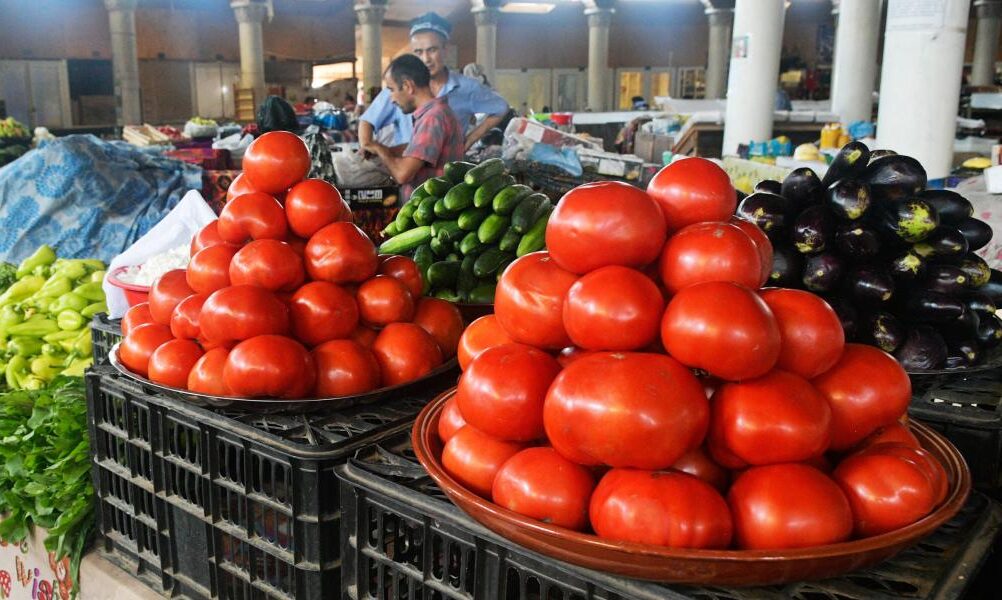East Asia Blog Series
Analyzing the Factors that Constrain Trade Efficiency in CAREC
Yue Wang and Binyang Yan 20 Oct 2022
This study examines the impediments and gaps that hinder the growth of regional trade and ways to reverse declining trade efficiency.
Overview
Despite having reached a certain level of consensus, Central Asian countries still face challenges in regional trade cooperation. Trade efficiency is generally low and even declined from 2001 to 2020.
Analyzing trade efficiency and influencing factors in the Central Asia Regional Economic Cooperation (CAREC) region using the stochastic frontier gravity model(link is external) showed that 56% of the 11 member countries have a trade efficiency score lower than 0.2. The study considered not only the countries’ economic scale, population size, and influencing factors, such as geographical distance and border condition, but also political barriers, differences in digitalization, and institutional distance.
Conducted under the CAREC Institute CTTN Research Grants Program 2021, the study found transportation costs and trade barriers among the major factors constraining the growth of regional trade, while interconnectivity serves as an important driver of trade. A widening gap in digitalization may also affect regional trade prospects.
Governments should reduce regulations and allow market forces to allocate resources more effectively. Policy makers should also give attention to differences in informatization—how much information and communication technologies contribute to national development—among CAREC members.
Analyzing Trade Efficiency
CAREC is a crucial organization promoting trade cooperation. It involves many of the countries situated at the border of the European and Asian continents. However, the study showed that despite some progress, the current level of actual trade is far from ideal, and trade resistance is high.
Results of the study showed that Afghanistan and Tajikistan—because of their low economic level in the world— are generally inefficient in export trade and have not formed close trade relations with other CAREC members.
The Kyrgyz Republic and Pakistan also posted low trade efficiency levels with other CAREC countries. Kazakhstan, even with its membership in the Eurasian Economic Union, showed low trade efficiency.
Mongolia and Uzbekistan both showed high trade efficiency with the People’s Republic of China, but their trade volume with other CAREC countries is far from ideal.
Kazakhstan and Turkmenistan have high trade efficiency with other CAREC countries.
Azerbaijan and Georgia were the most efficient. However, their main export destination countries are outside CAREC. Majority of Azerbaijan’s exports go to Italy and Turkey, while Georgia’s exports go to Turkey and Russia.
Key Findings
Regional trade efficiency is generally in decline. Most CAREC countries became independent after the collapse of the Soviet Union and focused initially on national stability and reconstruction.
Since the 21st century, some countries showed strong willingness to develop foreign trade. However, because of high trade costs, intra-regional trade development did not keep pace with the expansion of the trade boundary. From 2000 to 2020, the CAREC regional trade inefficiency factor resistance increased rather than decreased.
Trade integration can play a huge role. The low trade efficiency in the region shows that actual trade is far from the ideal level. Actively promoting trade integration is one of CAREC’s priorities. Other donors and multilateral agencies can also support this regional trade cooperation initiative.
Transportation cost is a main constraint factor. The impact of transportation cost is significantly higher than that of other control variables, indicating that regional trade is still limited by backward transportation infrastructure. The transport network inherited from the Soviet Union cannot meet the development requirements of globalization, and countries in the region encounter various problems in restarting their economies in the wake of the COVID-19 pandemic. There are not enough funds for infrastructure maintenance, let alone for the construction of a new transport network.
At present, major powers, multilateral institutions, and nongovernment organizations are actively involved in infrastructure construction in the region. The integration of transportation infrastructure in the region—which will effectively reduce transportation cost—can promote the development of export trade. Further efforts to promote regional connectivity in Central Asia remain an important focus in driving trade development in the region.
Trade barriers of exporting countries hinder efficiency. In the trade freedom index, a country’s restrictions and obstacles to import and export trade reflect the political barriers to trade. Political barriers of exporting countries have a significant effect on the efficiency of export trade in the region. These include export subsidies, voluntary export restrictions, sanitary and phytosanitary standards, and other nontariff trade barriers.
In order to release the region’s trade potential, CAREC countries should optimize their respective trade policies, reduce government regulation, and gradually transition to using market forces to achieve effective allocation of resources.
Differences in digitalization (informatization) have a negative impact on trade efficiency. Due to the COVID-19 pandemic, the gap in digitalization may further widen and become a new factor hindering trade development. Countries with weak digital infrastructure and insufficient digital development talent are more likely to slow down the application of digital new technologies because of the decrease in technology investment funds. The pandemic, however, has also indirectly promoted the spread of digital life and accelerated digital transformation in various fields, including international trade.
References
Y. Wang and B. Yan. 2021. Trade Efficiency and Influencing Factors in the CAREC Region: Based on the Stochastic Frontier Gravity Model. Central Asia Regional Economic Cooperation Institute. Xinjiang.
Author

Yue Wang
Canvard College, Beijing Technology and Business University
This blog is reproduced from Development Asia.


